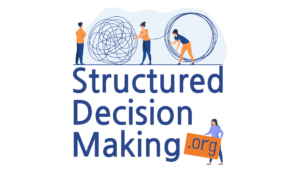Framing the Decision
A frame is a perspective on a decision that defines how that decision is scoped and approached. For example, suppose your car breaks down for good – it’s a write-off. Perhaps your initial thought on what comes next is to ask yourself, “ok, what car should I buy to replace it?” Think of this as a kind of perspective on a problem (a frame) that follows immediately from the triggering event of the car breaking down. But if you stop to think for a moment, other frames are available. For example, you could instead ask yourself, “what’s the best solution to my transportation needs?” Both these frames are fine, but would lead to very different analyses – one looking only at cars and the other including a wider range of transportation and potentially even virtual working.
Most decisions can be framed in various ways, each suggesting a different scope of analysis and potential solutions. Problems or opportunities typically come to our attention through a single triggering event or frame, usually an overly narrow one, which people tend to anchor on. This is problematic, as the initial frame may or may not be the best or most helpful way to move forward.
Landing on a useful frame is harder than it looks. Different people involved in the decision process are likely to have different perspectives. It’s often worth testing whether a decision or constraint initially taken as a given should be questioned. Discussing and clarifying linked decisions early is critical to ensure an efficient and effective process. Specifically, it’s useful to clearly define[1]:
- Decisions that have already been made and are to be taken as given
- Those that need to be focused on now – the focus decision(s), and
- Those that can be made either later or separately.
Some people refer to this as a decision hierarchy or decision spectrum.
There is no single ‘right’ frame. You’re looking for a balance between a frame that is practical and achievable with the resources you have, and yet allows you sufficient scope to develop creative solutions. As a starting point for knowing if you have a useful frame, ask three core questions[2]:
- Does the frame respond to the problem? There is usually a triggering problem that brings people to the table. The frame should provide solutions that address that problem.
- Does it give you the flexibility to explore creative solutions? A too-narrow frame limits the range of possible options that can be considered to address the problem.
- Is it feasible to do the analysis and engagement required for the scope within the resources and timeline available? While analytical effort can often be scaled to match resources, in some cases you may be better off re-scoping to something you can produce defensible results on. The level of effort and rigour should be commensurate with the stakes.
- Do you (or more accurately, your currently identified decision maker) have the authority to make the decision implied by the frame? If not, you need to either change the decision frame or change the decision maker(s).
The challenge is finding a frame that best addresses the triggering problem or opportunity, recognizes institutional complexities, and challenges assumptions while accepting hard constraints (such as the time and resources you have). Most often, you’ll take a few runs at it, and may only finalize the frame after you’ve completed a decision sketch.
[1] Adapted from: Spetzler, C., Winter, H., & Meyer, J. (2016). Decision quality: value creation from better business decisions (pp. 256).
[2] Adapted from: Making Hard Decisions: An Introduction to Decision Analysis by Robert T Clemen.
.

